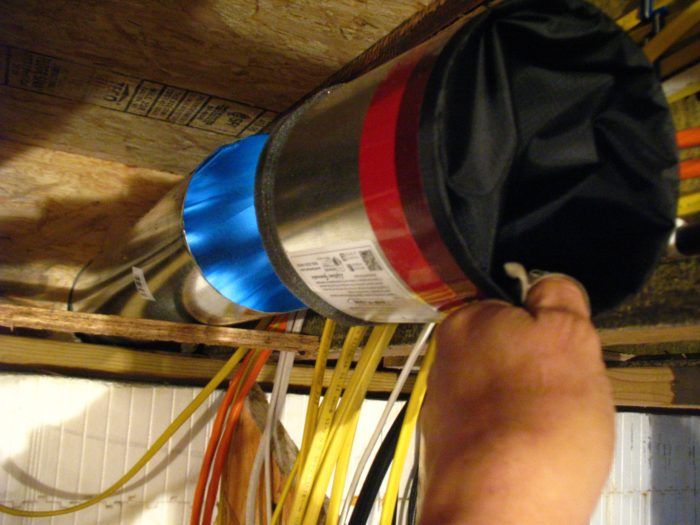Passive Backdraft Dampers
These fabric-lined backdraft dampers are an affordable alternative to mechanical/electrical dampers, but there are some places in a home where you shouldn't use them.


There are four 6-in. intake and exhaust ducts in the Rhode Island FHB House. It will be important to block air leaking into or out of those ducts in an uncontrolled fashion. One way to control undesired air flowing in and out is by using backdraft dampers. The best option is to install motorized backdraft dampers that open when equipment is being operated. Motorized dampers require control and operation wiring.
A simpler option we are employing is to install passive backdraft dampers — in this case, Tamarack Technologies’ Cape Backdraft Dampers. The dampers are one-way fabric valves that open in the direction of flow when there’s a force blowing or drawing air through a duct, and close when air moves opposite to the direction of flow.

There are two ducts for the range hood and two for the Zehnder ERV system. Since the range-hood exhaust can have oil and other
contaminants in the air stream, a Cape damper shouldn’t be used, so we are relying on the spring-loaded passive damper in the wall cap. The range-hood makeup-air duct has a Cape damper inserted within the 6-in. duct near the exterior wall.
There are also two ducts for the ERV. Even though the system will operate continuously at a low level, there are times when it will be turned off — like when the occupants go on vacation or during the times (spring, summer, fall) when the windows are opened for extended periods. Both ERV ducts have Cape dampers installed near the exterior wall facing in the direction of the airflow.
 Cape dampers are easy to install. They are sized a bit smaller than standard ducts (4 in. and 6 in.), so you just slide the damper into the duct nearest the outside wall before installing additional sections. The foam gasket on the perimeter of the damper seals to the inside of the duct.
Cape dampers are easy to install. They are sized a bit smaller than standard ducts (4 in. and 6 in.), so you just slide the damper into the duct nearest the outside wall before installing additional sections. The foam gasket on the perimeter of the damper seals to the inside of the duct.
 The damper fabric is mounted at one point to the wall of the damper sleeve. That point must be facing at the bottom of the duct in order to work properly. The damper is friction-fit within the duct — no need for additional fasteners or adhesive tape to hold it in place.
The damper fabric is mounted at one point to the wall of the damper sleeve. That point must be facing at the bottom of the duct in order to work properly. The damper is friction-fit within the duct — no need for additional fasteners or adhesive tape to hold it in place.
Fine Homebuilding Recommended Products
Fine Homebuilding receives a commission for items purchased through links on this site, including Amazon Associates and other affiliate advertising programs.

100-ft. Tape Measure

Original Speed Square

Smart String Line























































View Comments
Mike I like your use of the cape dampers. I actually used the exact same setup in a home I built a couple years ago. However I'm not sure how having one of these on your ERV intake makes sense. The way you have it installed would never stop any unintended air from entering the house. The intake was the one duct that we chose to put a motorized damper on. It is a powered open damper. That way when the ERV is on the duct is open and when the ERV is off it is closed. If you were to do a blower door test with your setup, air would just come rushing in through your intake when the ERV is off.
If the windows are open when the weather is pleasant, (possibly allowing pollen and humidity to enter) what is the purpose of the dampers?
Since blower door tests allow the capping of ERV intake and exhaust grills (as the ventilation system would be in balance during occupancy, unlike dryers and chimneys), this isn't that big a problem.